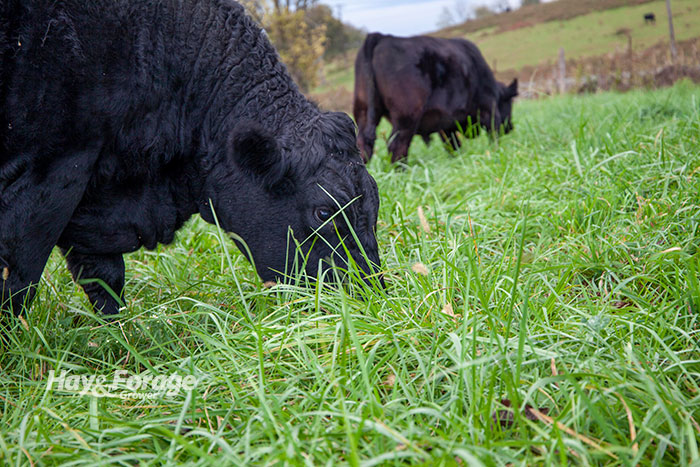
Similar to an old house that needs repair, an underperforming forage stand may need a renovation. Instead of cement foundations, blueprints, and constructions plans, though, a new seeding requires healthy soil, pest management, and an effective planting method.
Amanda Grev, a pasture and forage specialist with University of Maryland Extension, says mid-August to mid-September is the optimum time to renovate forage stands in her state. Although this window varies by region, producers across the country can implement similar strategies to ensure an effective transformation.
Test soil: Inadequate pH levels and nutrient deficiencies can hinder seedling establishment and stand persistence. Grev notes low soil pH is detrimental to root growth and development, and phosphorous is especially important for young plants to thrive. Therefore, it is essential to sample soil prior to pasture renovation and apply lime and fertilizer according to test results and recommendations.
Control weeds: Eliminate weeds before planting to prevent competition with new, desired forages. “While herbicides can be a useful tool for weed management, they are not the only option for weed control,” Grev asserts. “An integrated approach that combines various cultural, mechanical, and chemical control practices will be the most successful.”
Choose adapted species: Different forages are adapted to different soil characteristics, such as texture, drainage, water holding capacity, soil fertility, and topography. For example, Grev notes alfalfa and orchardgrass need a higher soil pH and have greater nutrient demands than other species. Select forages that are suited to a specific location and their intended use.
Inoculate seed: Legume seed must be inoculated to promote a relationship between plants and rhizobia bacteria and facilitate nitrogen fixation. If seed is not pre-inoculated, Grev instructs producers to purchase an appropriate strain of bacteria for their particular species and inoculant seed with an adhesive material.
“Inoculants are living organisms and will only work if the bacteria are alive when applied, so be sure to use proper storage and handling and check expiration dates,” she adds.
Prepare the seedbed: Tillage can be a useful tool for seedbed preparation when it is done correctly. Underworking soil might leave too much surface residue and create rough planting conditions, whereas overworking a field can break soil structure and dry it out. Grev suggests striving for a soft, yet firm, seedbed where a boot print is roughly 1/4-inch deep.
For no-till seeding, it is crucial to suppress existing forages and reduce surface residue. Clip or graze pastures closely before establishment or apply a nonselective herbicide.
“If using livestock to accomplish this via grazing, be mindful of the potential effects this may have on animal performance, including the consumption of lower quality forage and the potential for increased parasite loads as animals graze below the usual minimum height recommendation,” Grev cautions.
Calibrate equipment: Consider soil texture and moisture to determine seeding depth. While this is usually about 1/4 to 1/2 inch for most cool-season forages, Grev recommends planting seeds shallower in heavier, wetter soils and planting seeds deeper in lighter, drier soils.
Equipment must also be adjusted to ensure the desired seeding rate, and this depends on plant species, forage use, and planting conditions. “Pasture seeding rates are typically higher than hay seeding rates to provide a denser sod for grazing,” Grev says. “If conditions are optimal, seed at the lower end of the recommended range. If conditions are poor, seed at the higher end.”
Once pasture renovation is complete, refrain from grazing new forages until their root systems are fully developed. Continue to scout for weeds and other potential issues during the establishment year to promote plant growth and future productivity.

Amber Friedrichsen served as the 2021 and 2022 Hay & Forage Grower summer editorial intern. She currently attends Iowa State University where she is majoring in agricultural communications and agronomy.

